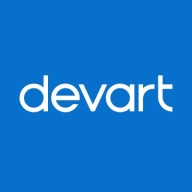

ViaSQL by Adaptigent and ODBC Drivers are competing products designed for data access across systems. ODBC Drivers frequently have the upper hand due to superior features and versatility, although ViaSQL appeals to cost-conscious users due to its pricing and support.
Features: ViaSQL by Adaptigent excels in integration capabilities, effective data translation, and strong system connectivity. ODBC Drivers are noted for platform compatibility, flexible data handling, and adaptability. ODBC Drivers offer enhanced data environment handling, making them more versatile.
Ease of Deployment and Customer Service: ViaSQL deployment is straightforward with responsive customer service ensuring smooth implementation. ODBC Drivers, though more complex due to advanced configuration, offer strong customer service for effective implementation.
Pricing and ROI: ViaSQL by Adaptigent is praised for competitive setup costs and favorable ROI for budget-friendly priorities. ODBC Drivers entail higher initial costs but justify this through enhanced features and long-term ROI benefits.
ODBC Drivers provide a robust mechanism for connecting applications to a diverse range of databases. They ensure seamless data access and quick integration across platforms, making them essential for data-related operations in many enterprises.
ODBC Drivers support a variety of database management systems, enabling data interchange and interoperability, which is crucial for businesses working with multiple databases. Known for their ability to facilitate the execution of SQL queries across various database systems, ODBC Drivers handle extensive data transactions with ease and security. With widespread adoption, they are a well-trusted choice for IT infrastructures demanding standardized data connectivity solutions.
What features make ODBC Drivers valuable?In industries like finance, healthcare, and retail, ODBC Drivers allow organizations to harness data-driven insights by integrating disparate data sources. Their implementation often leads to improved data analytics capabilities, empowering sector-specific applications to perform efficiently and reliably while handling large data volumes.
ViaSQL enables powerful data extraction from complex sources through standard SQL queries. It provides direct access to all your system databases, allowing teams to seamlessly manage enterprise data with ease. The powerful tool opens bi-directional access to both mainframe and distributed data sources, enabling rapid web and cloud application development. Gone are the days of complex and time-consuming legacy data management practices!
Direct Access to Data Sources
With ViaSQL, you can directly access mainframe data using ODBC or JDBC. The native read/write conversion functionality allows you to access both relational and non-relational databases with SQL queries, so your teams don’t need to know anything about mainframe databases.
Call Out From Mainframe Applications
ViaSQL also makes outbound calls from legacy applications by providing COBOL and PL/I access to distributed data sources. It allows for true bi-directional data access from the mainframe without the need to modify any legacy system code.
Bulk Transfer Capabilities
ViaSQL allows you to move large amounts of data between the mainframe and relational databases. It eliminates the need for other expensive and complex Extract, Transform, and Load (ETL) systems when copying mainframe data to modern data lakes and warehouses.
Combine Direct and Indirect Data Sources
When used with Adaptive Integration Fabric, ViaSQL allows you to combine direct and indirect data sources by creating workflows that pull data via mainframe applications, as well as directly from data sources. This allows users to not only create highly efficient data extraction systems but also expose data to modern systems such as REST or SOAP APIs.
We monitor all Data Integration reviews to prevent fraudulent reviews and keep review quality high. We do not post reviews by company employees or direct competitors. We validate each review for authenticity via cross-reference with LinkedIn, and personal follow-up with the reviewer when necessary.